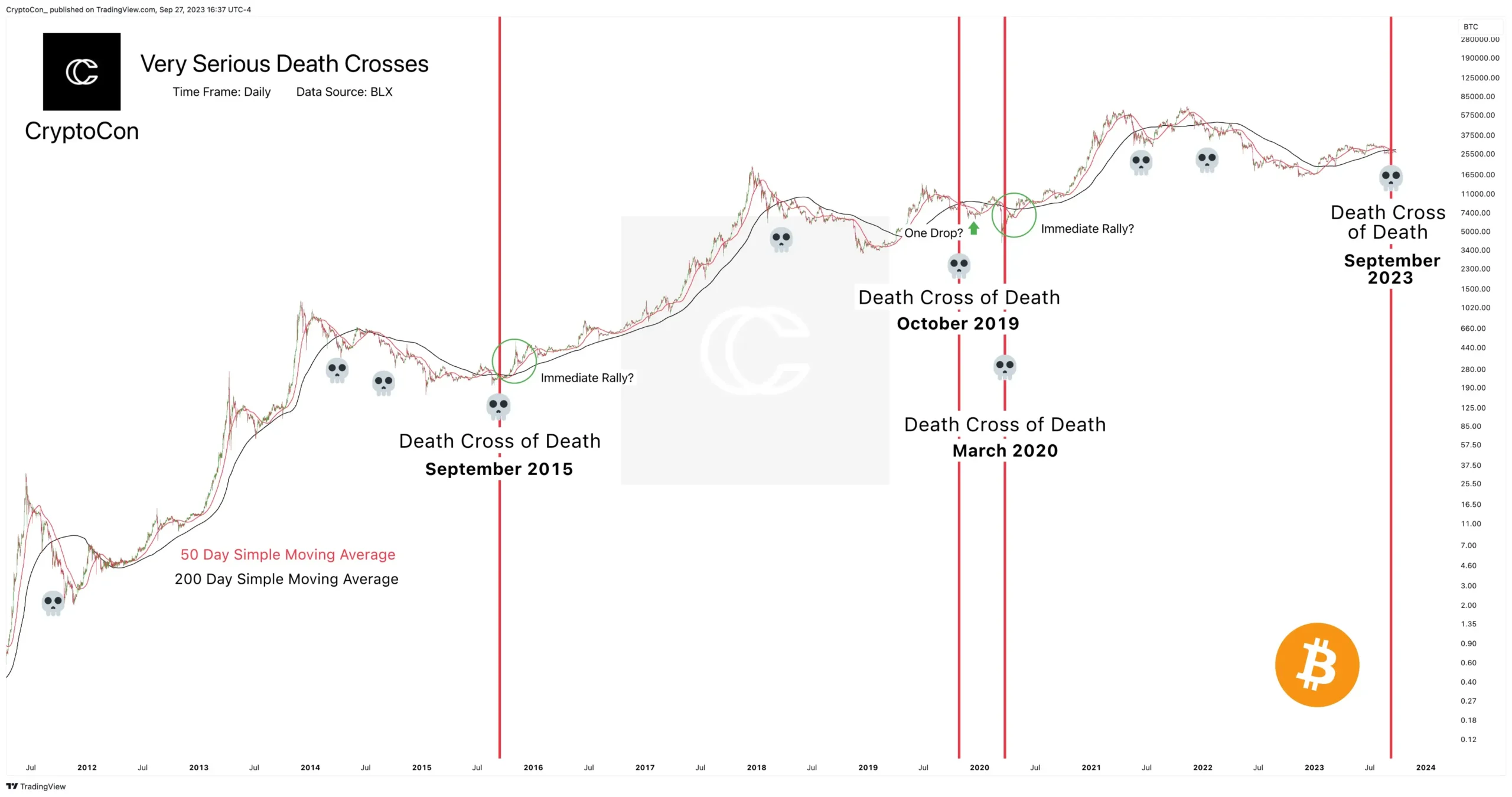Unraveling the Bitcoin Death Cross: Menace or Misunderstanding?
BTC
BTC/USDT
$21,619,999,225.26
$93,108.69 / $90,675.52
Change: $2,433.17 (2.68%)
+0.0060%
Longs pay
Contents
- The notorious Death Cross has emerged again in the Bitcoin narrative.
- Bitcoin has encountered this phenomenon 10 times throughout its history.
- “With moving average crosses, you need to compare apples to apples.”
Examining Bitcoin’s latest Death Cross: Is it truly a harbinger of doom, or just another blip in its tumultuous history? We delve into the past to find answers.
Deciphering the Bitcoin Death Cross
The Death Cross, a much-feared term in trading parlance, arises when the 50-day Simple Moving Average (SMA), illustrated in red, slides beneath the 200-day SMA, depicted in black. Often construed as a portent of bearish shifts, its occurrence is generally met with trepidation. But is this fear always justified? An in-depth review of Bitcoin’s past might suggest otherwise.
Bitcoin’s Death Cross in Historical Perspective

Of the 10 recorded instances of the Death Cross in Bitcoin’s journey, a significant 6 materialized either during or just prior to a bear market decline. This might initially raise eyebrows, but a deeper analysis provides clarity. To derive an accurate interpretation, it’s vital to ensure an equitable comparison. When we exclude these 6 scenarios, we’re left with 4, the current situation included. Remarkably, post two of these instances, Bitcoin rallied with considerable vigor. This underscores the argument that while the Death Cross might seem ominous, its real-world ramifications vary considerably.
The 2019 Scenario and Weekly Death Cross
The 2019 Death Cross deserves special attention. Post this occurrence, Bitcoin did experience a drop. However, this could potentially be attributed to the significant parabolic surge that preceded it. In the complex world of cryptocurrency, relying on a singular metric can be deceptive, more so without considering the overarching market dynamics. Additionally, the crypto community witnessed what was termed as the “first-ever” weekly death cross earlier this year. Despite the initial speculation and concern it might have stirred, its actual impact was negligible, suggesting that singular indicators should be taken with a grain of salt.
Conclusion
While the term “Death Cross” evokes a certain sense of foreboding among traders and investors alike, it’s imperative to view it in a broader spectrum. Bitcoin’s dynamic history indicates that while certain patterns might recur, their implications can diverge based on myriad factors. Instead of succumbing to market-induced panic, a balanced, comprehensive analysis is the key to understanding the potential implications of such events. Investors would do well to remember that in the volatile realm of cryptocurrencies, change is the only constant.
Jocelyn Blake
Comments
Yorumlar
Other Articles
Bitcoin Surges to $93,888: How Venezuela-US Tensions Triggered a Crypto Rally
January 5, 2026 at 07:04 AM UTC
Tether Adds Nearly 9,000 Bitcoin to Reserves in Q4 2025, Reaching 96,185 BTC
January 1, 2026 at 03:25 PM UTC
Bitcoin’s Potential 2026 Rebound Debated Amid Bottoming Signals
January 1, 2026 at 12:16 PM UTC
